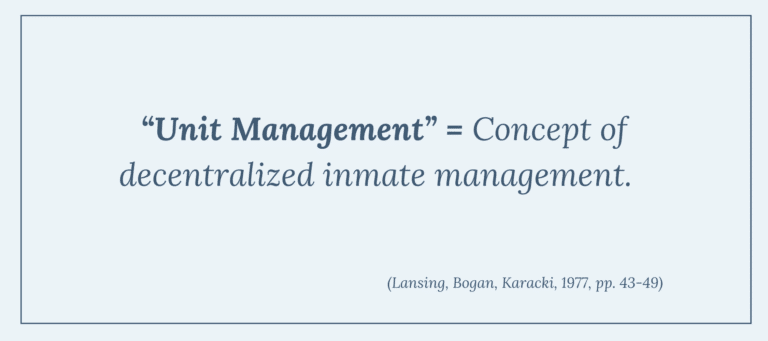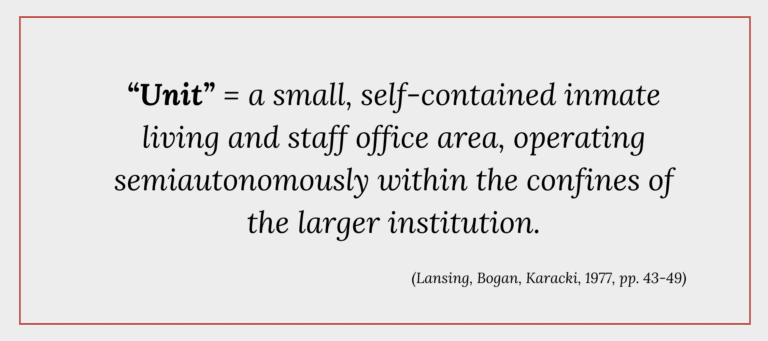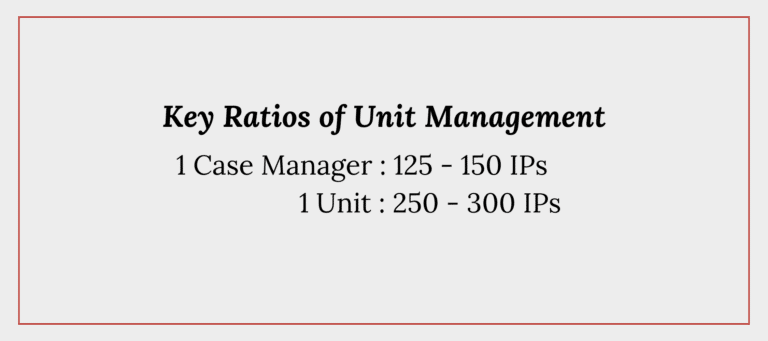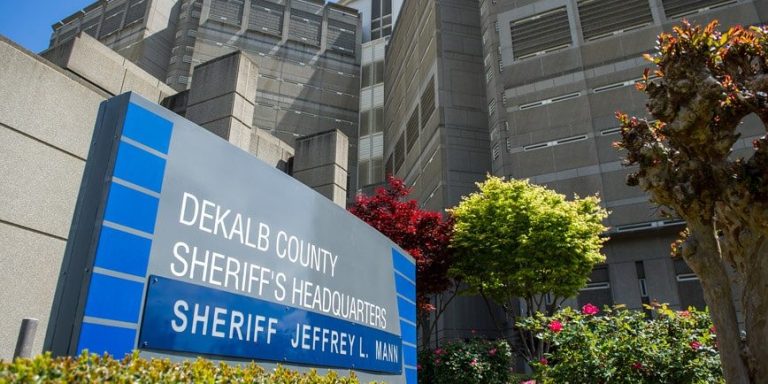 Through our blog we share our insights into core services, methodologies, instruments, and approaches that we think provide value to the justice community and the leaders within it. Today, I’d like to do just that by sharing my experience with the concept of Unit Management and the way in which it impacted my professional career in corrections.
Through our blog we share our insights into core services, methodologies, instruments, and approaches that we think provide value to the justice community and the leaders within it. Today, I’d like to do just that by sharing my experience with the concept of Unit Management and the way in which it impacted my professional career in corrections.
What is Unit Management?
Unit Management is the way in which prisons are operated; not just units. It takes large correctional facilities and breaks them into smaller recognizable units. Each unit is managed by a team committed to reducing negative incidents by “being responsive to the concerns of staff and needs of the incarcerated.” Staff in the facilities recognize unit managers as “mini wardens” responsible for the staff, Incarcerated Persons (IPs), and operations of the unit. For the IPs assigned to the unit, anything significant that happens to them in the facility happens through the unit team.
The Backstory – A Brief History of Unit Management
Unit Management was created in 1969 at a federal facility housing youthful adult inmates. The warden of that facility was Roy E. Gerard. This federal facility was experiencing a high number of violent incidents including fights, as is often the case in these kinds of correctional facilities. Roy recognized, in fact, that the inmates were in charge of the facility – the inmates created incidents and the staff responded.
In his role as a warden, Roy designed Unit Management by dividing his prison into smaller, manageable units, each with a population of approximately 250. For each unit, he appointed a unit manager and expected them to act as a “mini warden” and assigned them the responsibility of reducing the number of negative incidents associated with that population. He established a dedicated team to work with the unit manager to proactively be responsive to the concerns of the IPs, to know the population and anticipate incidents based on changed behavior. He expected non-unit departments [e.g. Medical, Mental health, Commissary, Food Service Accounts, Visiting] to be responsive to the unit team regarding the inmates assigned to their unit and consequently reducing unresolved issues before they grow into incidents. The unit team, including the unit manager, case managers and correctional supervisors, had specific duties, yet were cross-trained to enable them to step-in when members of the unit team were not available. This cross-training and the opportunity for staff to support all areas of the unit’s operation, provides a great staff development program. This team approach also supports staff retention with staff feeling they are part of a team and not working in an isolated manner, which is particularly important of correctional officers.
After serving in multiple posts in the BOP, Roy went on to serve as Assistant Director with Norm Carlson. As Assistant Director, he implemented Unit Management in all BOP facilities. Unit Management became the way federal facilities were operated. From 1984-1987, after his retirement, he served as a consultant for the National Institute of Corrections to support implementation of Unit Management. During that period, I had the great opportunity to work with Roy for three years as I coordinated the strategic implementation of Unit Management throughout all Ohio prisons and throughout other facilities in the U.S. This is but just a brief overview of the history behind Unit Management to give you an idea of how it got its start. For a more thorough overview, Dr. Robert B. Levinson has written extensively about Unit Management and its significant operational benefits.
Guiding Principles of Unit Management
The following principles are essential to successful implementation of Unit Management, which are consistent with quality facility management:
- Large facilities are divided into smaller, manageable-sized units.
- A team of cross-trained staff works together to proactively manage a population of IPs. Unit staff are located in the unit or in close proximity to the unit, if no space is available. If not in the unit, unit staff should have regular posted office hours with IPs having the ability to meet with them.
- Unit operations are guided by a written unit plan including schedules and duties of staff and all events that impact the unit. The unit plan is approved and signed by the Deputy Warden and Warden to provide necessary authority.
- Metrics are established to monitor the progress of each unit.
- IPs recognize that anything significant during their incarceration comes through the unit team and that their case manager is located and available to them on the unit.
- Staff assigned to the unit team become uniquely qualified for promotional opportunities given the wide range of responsibilities associated with their jobs.
- The unit team’s schedule covers the seven-day operation and includes some evening coverage.
- During the absence of the unit manager, another unit team member steps up to act for the unit manager within the framework of the unit plan.
- The unit manager is part of the leadership team of the facility.
- The unit team consists of the unit manager, case managers, uniformed security supervisors (called “correctional counselors” by Roy E. Gerard) and the correctional officers assigned to the unit.
- Facilities have both a Chief of Unit Management, who directs all aspects of unit operations, and a Security Chief, who is responsible for all operations outside the unit and for the night shift inside the entire facility. Both of these Chiefs report to the same Deputy Warden who ensures necessary communication and coordination.
Getting Started – Implementation Approaches
A physical assessment of each facility to be converted to Unit Management needs to be conducted to determine how the facility can be most effectively divided into units of approximately 250-300 depending on the configuration of the housing units. In the event the housing units are not conducive to this desired size, smaller housing units in proximity to each other can be combined to form one unit to be managed by a unit team. In the case where a single unit is significantly larger that the recommended 250-300, additional staff can be added to the team of a unit manager to compensate for the larger numbers. Each case manager should have a caseload of approximately 125-150. The same ratio should be in place for the correctional supervisor. Corrections officers are assigned based on the recognized posts. All staff on day and evening shifts report to the unit manager.
Given the significant responsibility of the unit manager, it is important to select leaders that are respected, experienced, people-focused and capable of leading a diverse staff. When a facility is in the process of implementing Unit Management, it has an opportunity to select a team of unit managers that have different experiences and strengths, which allow unit managers to act as a team to support each other. It is recommended that the team of unit managers be compromised of staff that have been successful, communicative security supervisors, as well as other administrative, program staff, and case managers.
This is Part One of a Two-part series onUnit Management – Stay Tuned for Part Two, where we discuss components of an effective Unit Management plan and establishing the right KPIs for your facility.
References:
Lansing, D., Bogan,Jj.B., Karacki, L. (1977). Unit Management – Implementing a Different Correctional Approach. Federal Probation, 41(1), 43-49.








